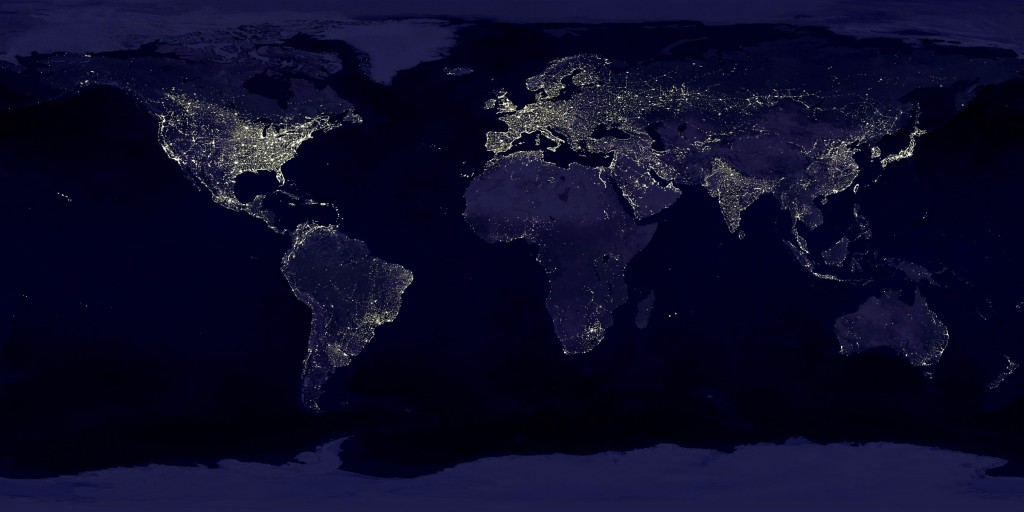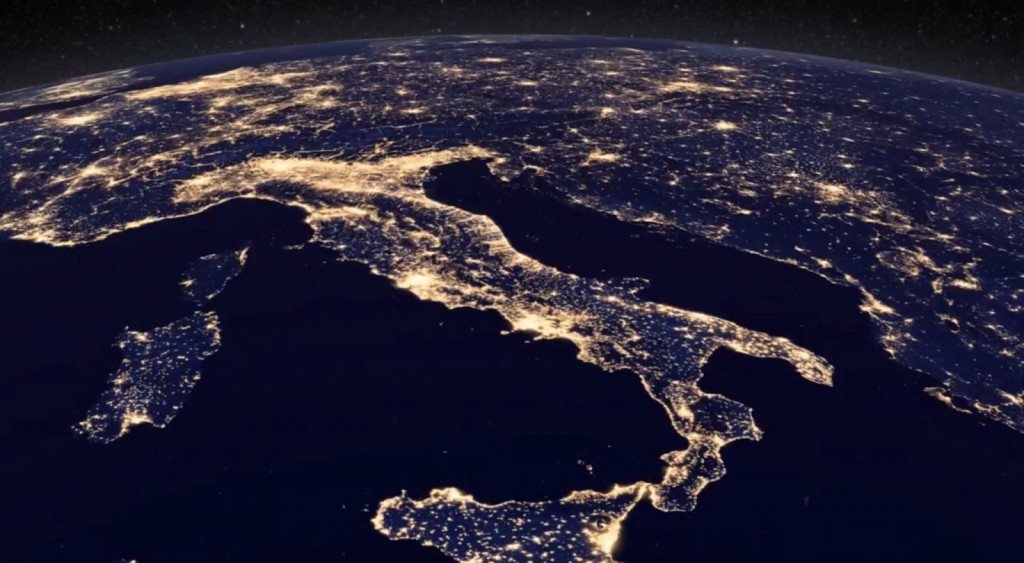History by Kilowat: Humanity Glimpsed from Space January 27, 2016
Author: Beach Combing | in : Actualite, Contemporary , trackback‘The first day or so we all pointed to our countries. The third or fourth day we were pointing to our continents. By the fifth day, we were aware of only one Earth.’ Sultan bin Salman Al-Saud
These sentiments do Sultan bin Salman credit, but the earth at night is rather less democratic than the spinning blue globe. Perhaps the single most important mark of the digital human being (i.e. you and me) is the electric light. Seen from outer orbit the world can be divided into those that have electric light and those that do not; or at least those that can afford to use it in the black hours. Take for example, this shocking map of South and North Korea, where the hermit kingdom remains resolutely in the 1900s; while South Korea has already got its head into the twenty-second century.
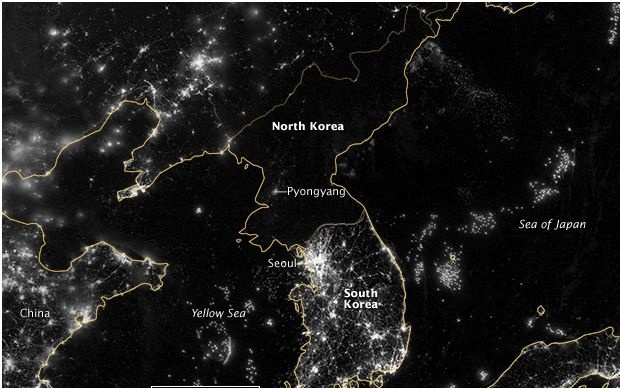
The night earth also shows the parts of world that have resisted humanity: ‘the happy miles’ as one prehistorian called them. This is the edge of the Himalayas where even fast growing India cannot exploit the impossible rock and ice boundary to its north.
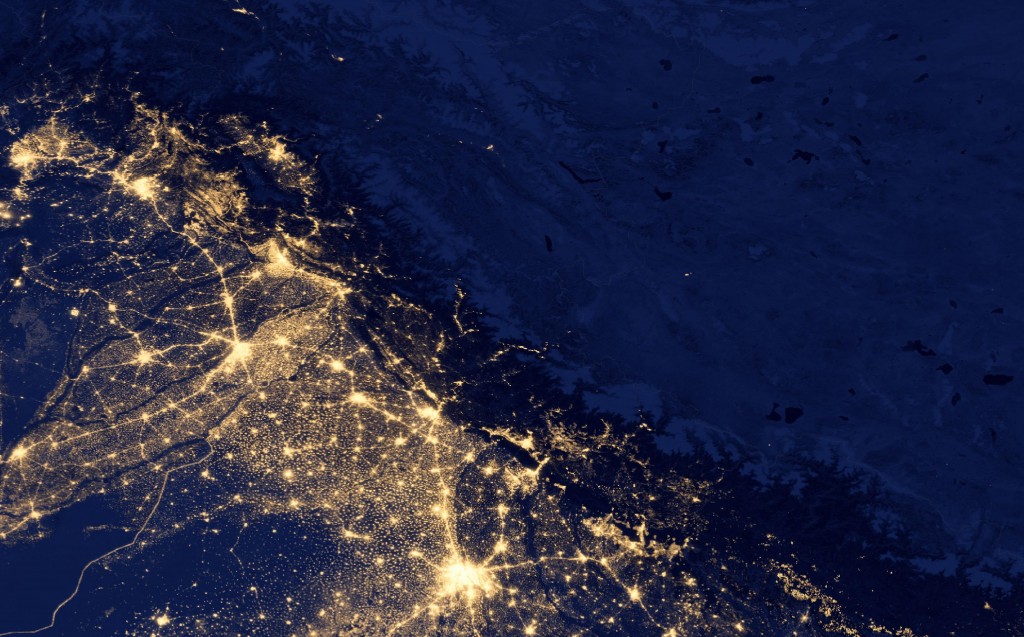
Ditto Italy where the long line of the Apennines from the Alps to Calabria stand out: particularly to the south of the Po.
Here, meanwhile, is Africa with the dramatic absence of light in the Sahara but also pretty much everywhere else save urban South Africa and Nigeria. The new dark heart of the earth?

But Beach was moved most of all by recent photographs from that poor, murdered country, Syria. Here Islamists, Western intelligence services, Hezbollah, Ba’athites, Vladimir Putin, Kurds, holiday mercenaries from the west and from the Gulf States have broken a nation. Admittedly Syria has not been a very nice place to live for much of the last fifty years: particularly if you belonged to one of its national minorities. But the butchery, genocide, ‘ethnic cleansing’ and war crimes of the last four years have actually managed to make the Ba’ath regime seem ‘merely’ bad. Here, in any case, is the picture of Syria before the war began and here is Syria today. A Martian with the right kind of telescope would notice that something had happened in this small patch of the Levant.
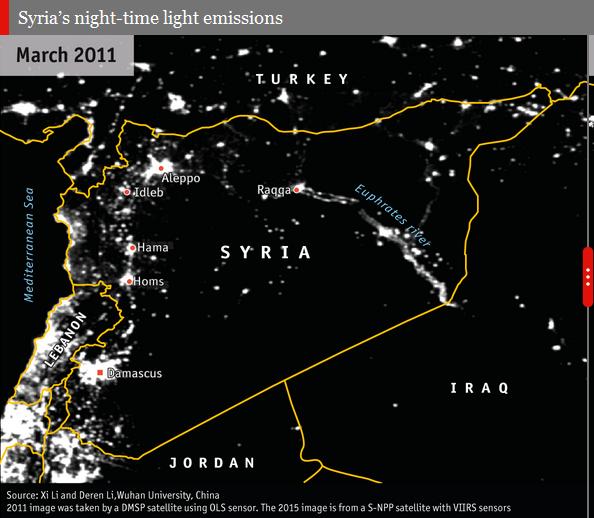

In another fifty years it will be possible to write serious history papers on the rise and fall of civilizations with the kilowatts visible from the clicking cameras on Chinese or US satellites. Beach has spent the last ten minutes trying to look at the way India appears in space in 1980 and 2010 but has failed: the difference would be dramatic. These kinds of surveys would actually tell us a lot about ‘digitalizing’ and de-digitalising countries (‘industrializing’ is so nineteenth century). Note on the Syria pictures above you can see the increase in electric ‘pollution’ in nearby Lebanon.
ther evidence of history from space: drbeachcombing AT yahoo DOT com
Then when human probes finally make it to other solar systems our first sign of neighbours will be electric lakes on green planets…

